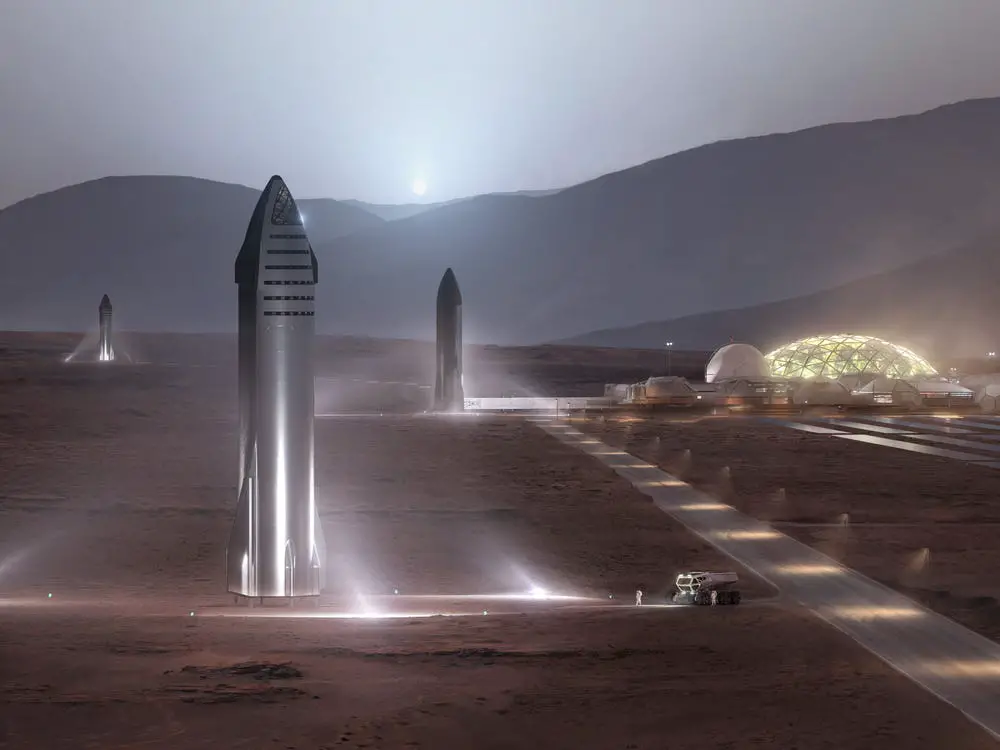Elon Musk, chief executive officer of Space Exploration Technologies Corporation (SpaceX), has revealed his astounding ideas for sending rockets to the planet Mars. In Boca Chica, Texas, where Musk’s business is headquartered, the next-generation launch vehicle platform known as Starship is now undergoing development. When it is finally put into operation, Starship is going to be the biggest rocket in the history of the world, and the fundamental goal of SpaceX, which is to turn mankind into an interplanetary species, is at the center of its design.
The CEO provided further information and offered a slide deck from a recent presentation he delivered at SpaceX. He also was helpful with additional specifics on his plans for the colonization of Mars. Although its primary purpose is to make the journey to Mars, SpaceX intends to use the Starship rocket to replace its Falcon series so it can carry out missions to low Earth orbit (LEO) and other locations.
In addition to that, it is a component of the Artemis program that is run by the National Aeronautics and Space Administration (NASA), which has the objective of establishing a base of operations on the Moon. Elon Musk has said that SpaceX’s Mega Rocket was created with the intention of deploying pairs of small satellites into orbit. The slide deck was a compilation of important talking points that were a part of Musk’s presentation.
It did not feature any substantial textual or spoken parts, and it was just comprised of talking points. In spite of this, it was nonetheless able to provide us with a number of essential information that pertains to Starship’s core. To construct the new rockets, SpaceX will need to make a major investment in cash, and in order to recoup that investment, the company will need to utilize the rockets for reasons other than Mars travel.
For example, SpaceX’s ambitions to establish a 40,000-satellite internet constellation as part of its Starlink internet service rely heavily on the Starship spacecraft, which is an essential component of those plans. Additionally, it will supply NASA with a lunar lander, and it will become SpaceX’s go-to vehicle for refueling other Starships in orbit and launching payloads that presently employ the Falcon 9 rocket lineup. Both of these functions are now performed by the Falcon 9 rocket lineup.
During the presentation, information on the Starlink launches was provided via the use of a render that demonstrated the top stage of the rocket, which is also known as the Starship, simultaneously releasing two satellites into orbit.
In addition to this, Musk reaffirmed the motivations for his efforts to design a rocket that would one day be able to transport people to Mars. The CEO and his organization have received a lot of criticism for these objectives, with some critics arguing that it would be preferable to devote money to finding solutions to issues that already exist on Earth.
The millionaire explained his thought process and started his driving force by stating:
He went on to describe how he intends to use Starship in order to accomplish these objectives. The rocket may be broken down into two distinct sections. The first stage, also known as the lower stage, is a booster that is 230 feet tall and is powered by 33 Raptor 2 engines. The Starship spaceship, which has a height of 164 feet, is mounted atop the launcher, and the total height of the Starship launch system is 394 feet.
Musk’s answer to a question that asked him what his “plan” was to do this was pretty straightforward, but it revealed the inconceivable magnitude of operations that the 50-year-old leader intends to carry out.
Musk claims that the strategy is straightforward. The modern-day version of Noah’s ark, SpaceX’s mission to Mars will include the construction and launch of thousands of Starships. To quote him directly:
In the facility in Texas where SpaceX is located, prototypes of the first-stage rocket as well as the second-stage capsule are now being constructed. The corporation has previously conducted tests on the top stage, and it is presently waiting for the Federal Aviation Administration (FAA) to complete conducting an environmental study of the Texas site. As part of a distinct and very important procedure, this will make it possible for rocket manufacturers to submit an application to the FAA for a launch license.
Source: WCCFTECH

